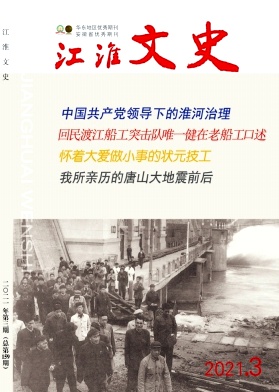熱電廠水汽采樣和化學(xué)加藥控制系統(tǒng)研究
佚名
【摘要】在熱力發(fā)電廠中,水汽品質(zhì)是一項(xiàng)重要指標(biāo)。好的水汽品質(zhì)可以提高熱力設(shè)備的性能,延長設(shè)備的使用壽命,節(jié)約能源,減少事故發(fā)生率。反之水汽品質(zhì)的失調(diào)將會(huì)給電廠的熱工設(shè)備造成不同程度的損傷,給機(jī)組的安全和電廠穩(wěn)經(jīng)濟(jì)運(yùn)行帶來隱患。所以水汽采樣和化學(xué)加藥是電廠熱工過程的兩個(gè)重要環(huán)節(jié)。 本文根據(jù)水汽采樣和化學(xué)加藥的工藝特點(diǎn),從硬件和控制算法兩方面著手設(shè)計(jì)熱力發(fā)電廠化學(xué)加藥控制系統(tǒng),采用上位機(jī)和下位機(jī)相結(jié)合的系統(tǒng)。上位機(jī)用工業(yè)計(jì)算機(jī)和組態(tài)軟件構(gòu)成友好的人機(jī)界面,方便了系統(tǒng)的操作;下位機(jī)采用西門子S7 400H PLC進(jìn)行數(shù)據(jù)采集和化學(xué)加藥控制。用工業(yè)以太網(wǎng)構(gòu)成管理層,負(fù)責(zé)上位機(jī)和下位機(jī)之間、本系統(tǒng)和電廠其它系統(tǒng)之間的通信。現(xiàn)場總線構(gòu)成現(xiàn)場設(shè)備的控制層,負(fù)責(zé)現(xiàn)場設(shè)備和PLC間的數(shù)據(jù)傳輸。 設(shè)計(jì)上從上位機(jī)、下位機(jī)、以太網(wǎng)到現(xiàn)場總線均采用了冗余結(jié)構(gòu),來提高監(jiān)控系統(tǒng)的可靠性。并把這樣的系統(tǒng)作為電廠DCS的子系統(tǒng)。為提高系統(tǒng)的實(shí)時(shí)性,本文研究了DCS的通信問題,介紹了一些提高通信能力的方法。 隨著電廠規(guī)模的日益擴(kuò)大,工藝水平的不斷提高,要求采用更新穎的控制技術(shù)來滿足工藝的需要。由于化學(xué)加藥控制系統(tǒng)的非線性、大時(shí)滯、時(shí)變的特點(diǎn),常規(guī)的控制方法難以獲得滿意的控制效果。為了提高系統(tǒng)控制的魯棒性和自適應(yīng)能力,本課題將模糊控制引入到熱電廠化學(xué)加藥控制系統(tǒng)中。在算法方面,經(jīng)過研究決定采用參數(shù)自適應(yīng)模糊PID自動(dòng)加藥控制代替手動(dòng)控制或是傳統(tǒng)PID控制,并用仿真曲線來分析其動(dòng)態(tài)性能和抗擾動(dòng)能力。仿真結(jié)果表明,該策略的控制效果優(yōu)于常規(guī)的PID控制,它能適應(yīng)對象參數(shù)的變化,具有較強(qiáng)的魯棒性和自適應(yīng)能力。
關(guān)鍵詞:現(xiàn)場總線;加藥;時(shí)滯系統(tǒng);模糊PID控制;原文word稿件點(diǎn)擊下載 Abstract In the thermal power plant, the parameters of water and steam of thermal system is a importance target. The good parameters of water and steam of thermal system can improve the performance of thermal equipment, and prolong the useful life of equipment, the using of devices, and save energy, reduce the ratio of the accidents. Contrarily, it will cause varying degrees of damage inthermal equipment of the Power Plant, and bring hidden troubles in the secure and economic running of the power plant, so, the chemical vapor sampling and Dosing is an important link for thermal power plant. On the bases of the Technological requirements of the water and steam of thermal system chemical and the dosing control system, the hardware and control algorithm is designed in the paper. In the hardware design, the upper and the hypogynous are combined in the design, the upper of the system is composed of PC and SCADA to be made of the friendly Man and Machine Interface, and it facilitates the operation of the system. The hypogynous of the system adopts Siemens S7 400H PLC to collect data and to control the process of the dosing control system. Industrial Ethernet is used of the management, and sees to communication between the upper and the hypogynous or between the system and other plant systems. FCS is used of the Control layer, it sees to the data transmission between on-site equipments and PLC. In this paper, to increase the reliability of the Monitoring system, the redundant structure is used from the PC、the upper、the hypogy nous、the Ethernet to FCS. The system is looked on as the subsystem of the DCS. Many communication methods are introduced in this paper, to improve the real-time of the system. With the growing scale of power plants and with the continuous raising level of technology, it requires to update the control arithmetic. Since the chemical dosing control system of fossil power plant is characterized by nonlinearity, long time lag and variation with time, satisfying control effect can not be achieved with traditional control methods. In order to increase the robustness and self-adaptability of the chemical dosing control system in the system of dosing is designed. In this paper, fuzzy control system of dosing. In the algorithm, Fuzzy self-adaptation PID control is used instead of the traditional manual control or the traditional PID control, The dynamic performance and anti-disturbance is analyzed by simulation, Simulation results show that the control effect by this strategy is superior to that of normal PID cascade control. It is featured by strong robustness and self-adaptability, and can readily accommodate itself to the object's parameter variations.
KEY WORDS: FCS; Dosing; time-delay system; Fuzzy self-adaptation PID Control
目 錄 摘要 I ABSTRACT II 第一章 緒論 1 1.1課題研究的意義 1 1.2國內(nèi)外研究現(xiàn)狀及趨勢 1 1.3本文的主要研究內(nèi)容 2 第二章 電廠水汽監(jiān)控系統(tǒng)介紹 4 2.1電廠DCS系統(tǒng)介紹 4 2.1.1DCS系統(tǒng)簡介 4 2.1.2電廠控制級功能簡介: 4 2.1.3西門子DCS系統(tǒng) —— PCS7 4 2.1.4電廠輔控網(wǎng)組成 6 2.2火電廠水汽系統(tǒng) 7 2.3化學(xué)加藥系統(tǒng)原理 9 第三章 系統(tǒng)設(shè)計(jì)原理及功能 11 3.1上位機(jī)系統(tǒng)設(shè)計(jì) 11 3.1.1上位機(jī)硬件 11 3.1.2軟件設(shè)計(jì) 11 3.1.3利用InTouch 軟件實(shí)現(xiàn)冗余功能 14 3.1.4InTouch數(shù)據(jù)庫 16 3.2下位機(jī)PLC控制系統(tǒng)設(shè)計(jì) 17 3.2.1下位機(jī)控制系統(tǒng)硬件配置 17 3.2.2硬件系統(tǒng)的冗余設(shè)計(jì) 18 3.3系統(tǒng)時(shí)鐘設(shè)計(jì) 24 3.4電源設(shè)計(jì) 25 第四章 DCS系統(tǒng)通訊問題研究 26 4.1現(xiàn)場總線應(yīng)用及其安全可靠性的提高 26 4.1.1現(xiàn)場總線的發(fā)展與應(yīng)用 26 4.1.2Profibus現(xiàn)場總線通信協(xié)議。 27 4.1.3系統(tǒng)實(shí)時(shí)性研究 29 4.2工業(yè)以太網(wǎng)實(shí)時(shí)性問題及解決方案。 33 4.2.1工業(yè)以太網(wǎng)通信原理 33 4.2.2工業(yè)以太網(wǎng)實(shí)時(shí)性問題的研究 35 第五章 化學(xué)加藥控制理論研究 37 5.1加藥系統(tǒng)控制對象數(shù)學(xué)模型的建立 37 5.1.1 控制對象選擇 37 5.1.2 控制對象特性分析 37 5.1.3 建立控制模型 38 5.2 控制算法的確定 41 5.3 加藥模糊控制器的建立 41 5.4 化學(xué)加藥參數(shù)自調(diào)整模糊PID控制器的設(shè)計(jì) 46 5.5 仿真曲線 48 第六章 電廠化學(xué)加藥模糊控制系統(tǒng)的設(shè)計(jì)與實(shí)現(xiàn) 51 6.1控制系統(tǒng)的原理與控制指標(biāo) 51 6.1.1控制系統(tǒng)的原理 51 6.1.2自動(dòng)加藥控制系統(tǒng)主要技術(shù)指標(biāo) 52 6.2硬件系統(tǒng)設(shè)計(jì)方案 52 6.3軟件實(shí)現(xiàn) 57 第七章 總結(jié)與展望 61 致謝 62
第一章 緒論
1.1課題研究的意義 近年來,我國經(jīng)濟(jì)迅速發(fā)展,生產(chǎn)力不斷提高,電力作為經(jīng)濟(jì)發(fā)展的動(dòng)力得到了迅速的發(fā)展。為了節(jié)省能源和保護(hù)環(huán)境,提高火力發(fā)電的經(jīng)濟(jì)性,大容量超臨界機(jī)組因其能源利用率高、經(jīng)濟(jì)性能好而得到快速發(fā)展,已在世界發(fā)達(dá)國家廣泛應(yīng)用。隨著科學(xué)技術(shù)的發(fā)展及計(jì)算機(jī)更新升級,先進(jìn)的控制策略、專家系統(tǒng)、現(xiàn)場總線和智能變送器的廣泛應(yīng)用,將有利于節(jié)約投資,降低能耗,便于維護(hù)和提高火電廠安全、經(jīng)濟(jì)運(yùn)行水平[1]。 熱工自動(dòng)化是火電廠不可缺少的組成部分,而熱工自動(dòng)化的水平又是現(xiàn)代火力發(fā)電技術(shù)和管理水平的綜合體現(xiàn)。這主要有兩個(gè)因素推動(dòng),一個(gè)是DCS,另一個(gè)是協(xié)調(diào)控制系統(tǒng)。DCS在電廠的普及應(yīng)用,為火電廠熱工自動(dòng)化技術(shù)的發(fā)展奠定了基礎(chǔ)。而協(xié)調(diào)控制系統(tǒng)在單元機(jī)組普遍投入,使火電廠熱工自動(dòng)化達(dá)到前所未有的新高度。目前廣泛采用以微機(jī)為核心的DCS,其可靠性很高,可依賴性強(qiáng),可以充分發(fā)揮自動(dòng)化的功能,并取得了很好的安全和經(jīng)濟(jì)效益。在熱工自動(dòng)化系統(tǒng)采用開放的工業(yè)計(jì)算機(jī)系統(tǒng)和遠(yuǎn)程智能I/O,有利于減少信號電纜,降低造價(jià);應(yīng)用先進(jìn)的控制策略、專家系統(tǒng)、可充分發(fā)掘DCS的潛力,解決一些老大難問題,進(jìn)一步提高電廠安全與經(jīng)濟(jì)運(yùn)行。 由于火電機(jī)組越來越大,對機(jī)組熱工自動(dòng)控制系統(tǒng)控制品質(zhì)的要求也隨之提高。為了保證單元機(jī)組的正常運(yùn)行以及高度的安全性、經(jīng)濟(jì)性,對單元機(jī)組的自動(dòng)化水平提出了更高的要求。由于單元機(jī)組存在著大遲延、大慣性和嚴(yán)重的非線性及擾動(dòng)頻繁等特點(diǎn),傳統(tǒng)的控制方法已經(jīng)不能滿足電網(wǎng)對機(jī)組的要求,用先進(jìn)的智能化控制策略取代常規(guī)控制策略成為火電廠過程控制發(fā)展的趨勢。目前,由于現(xiàn)有的給水加藥控制系統(tǒng)運(yùn)行不穩(wěn)定,加藥方式多采用手動(dòng)間歇控制或是采用傳統(tǒng)PID算法的自動(dòng)控制,工作費(fèi)時(shí)費(fèi)力,控制精度又不高。為提高系統(tǒng)的自動(dòng)化水平有必要研究新型的控制系統(tǒng)和控制策略,提高加藥控制系統(tǒng)的準(zhǔn)確性、快速性和魯棒性。
1.2國內(nèi)外研究現(xiàn)狀及趨勢 近年來,美國等發(fā)達(dá)國家對火電廠水汽監(jiān)控方面做了大量研究,提出最佳的化學(xué)監(jiān)控管<
用醫(yī)藥.jpg)
代遠(yuǎn)距離教育.jpg)
濟(jì)體制改革.jpg)

大觀園.jpg)
于我們.jpeg)